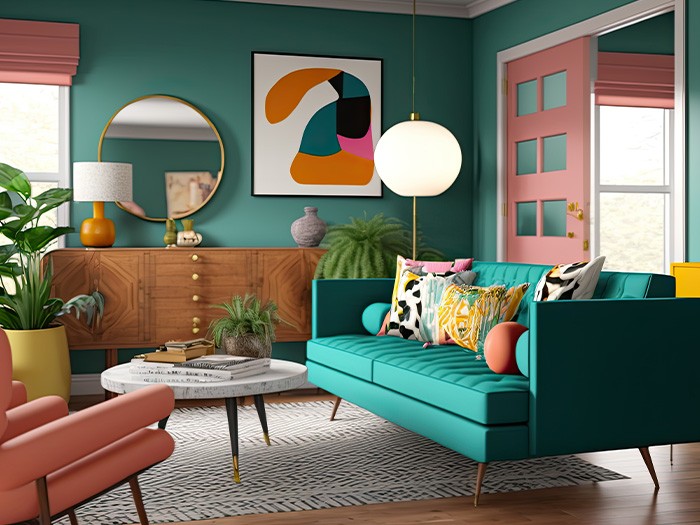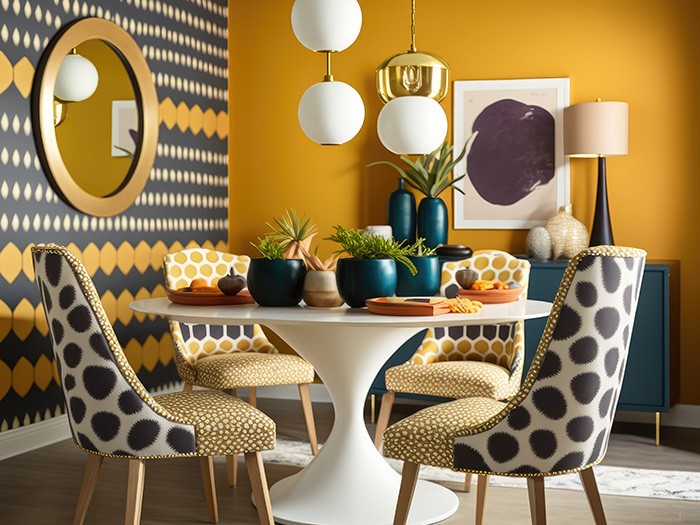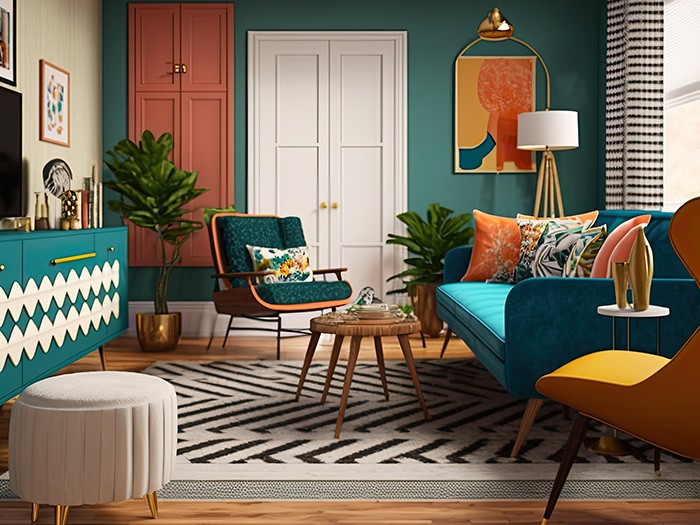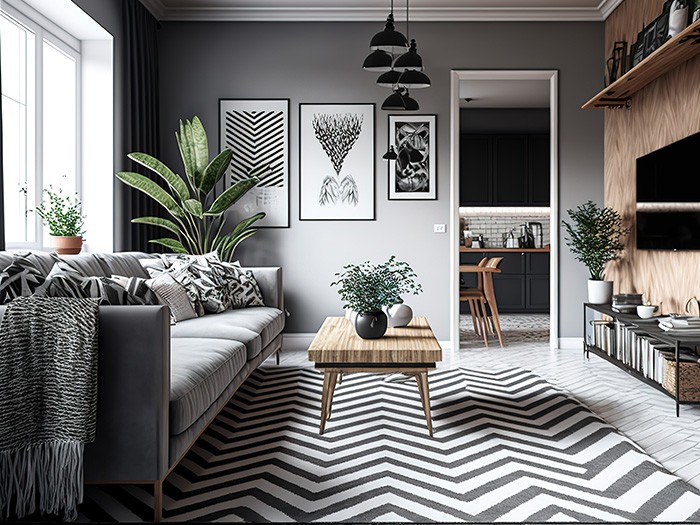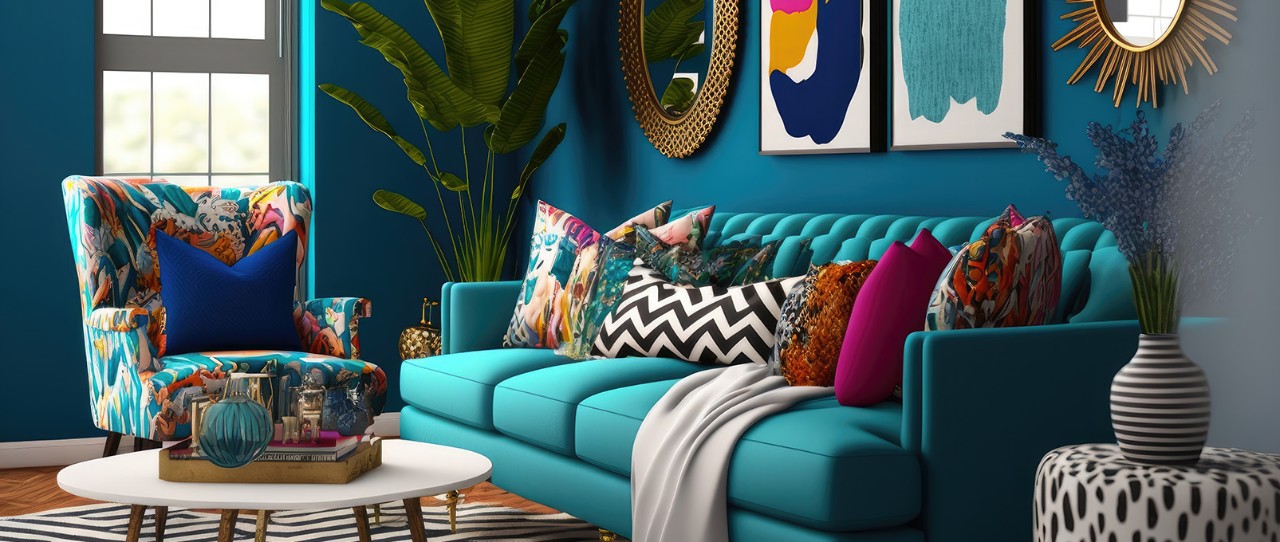1. Take inventory
Look around the room and note the patterns that are already there, such as those in the wood grain on floors, fireplace surrounds and window frame molding, then build off of them.
2. Choose a Color Palette
Decide what colors you want to use in the room. Select similar colors that have the same hue and intensity, giving you variety without making the room feel chaotic.
3. Channel a Mood
What sort of vibe do you want patterns to give to your room? If you’re looking for light, warmth and energy, go for a floral in summer shades. Leaf motifs add drama, while Ikat prints give a room an earthy vibe. Want something playful? Try polka dots. And if your style leans more toward traditional, you can’t go wrong with plaid.
4. Start Small
Nervous about adding patterns to walls? Then start with plain painted walls and introduce pattern with smaller accents, like throw pillows or area rugs.
5. Make Sure to Balance
If you have an intricate pattern you love and want to use a lot of, complement it with a simple pattern for balance. Keep in mind that some patterns, like chevrons, can be overwhelming in large quantities, so use those types of patterns sparingly.
Also make sure patterns are evenly spread out through the room. If you reserve patterns for say, just a corner, the room will look unbalanced.
6. Vary Sizes
Vary the size of the patterns. You might want to use a large-scale pattern to anchor the room and then use medium and smaller scale patterns on throw rugs or pillows. Also remember to break up patterns with solid neutrals or blocks of color, to give the eye a rest. If you have patterned drapes, for example, pair them with solid colored shades.
7. Don’t Go Overboard
Too many patterns in a room can look chaotic; pick three to four patterns and stick with them.
